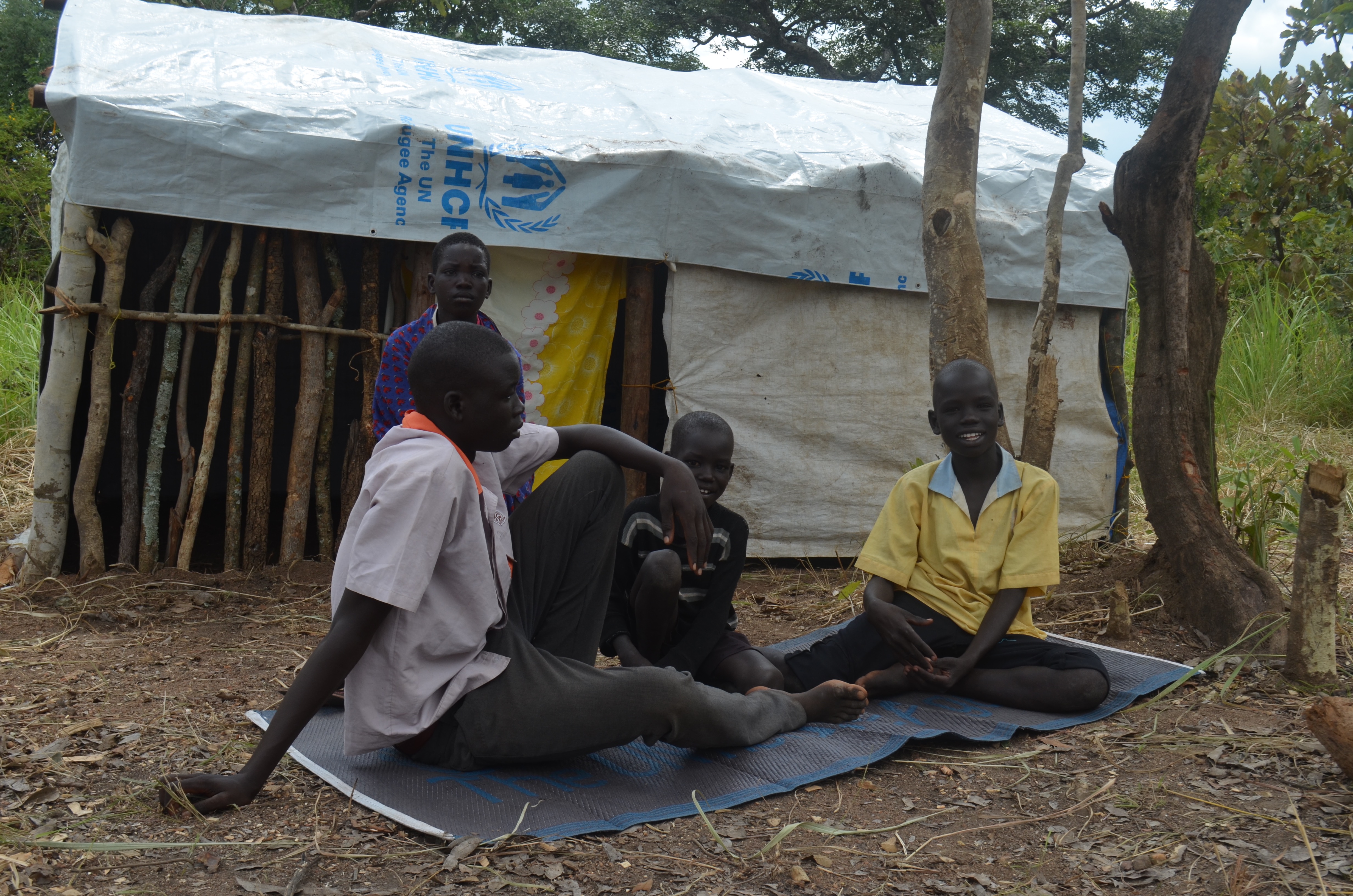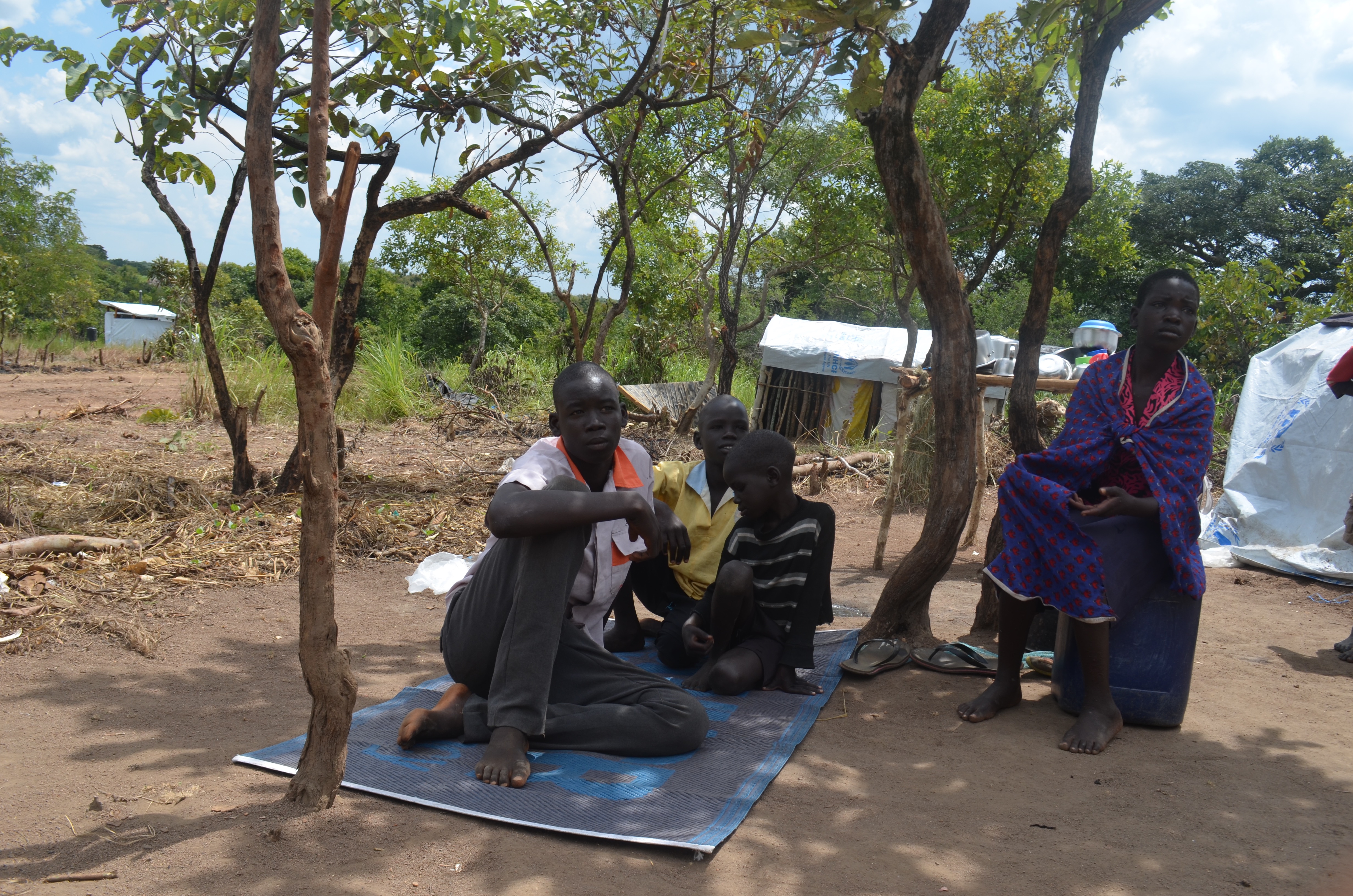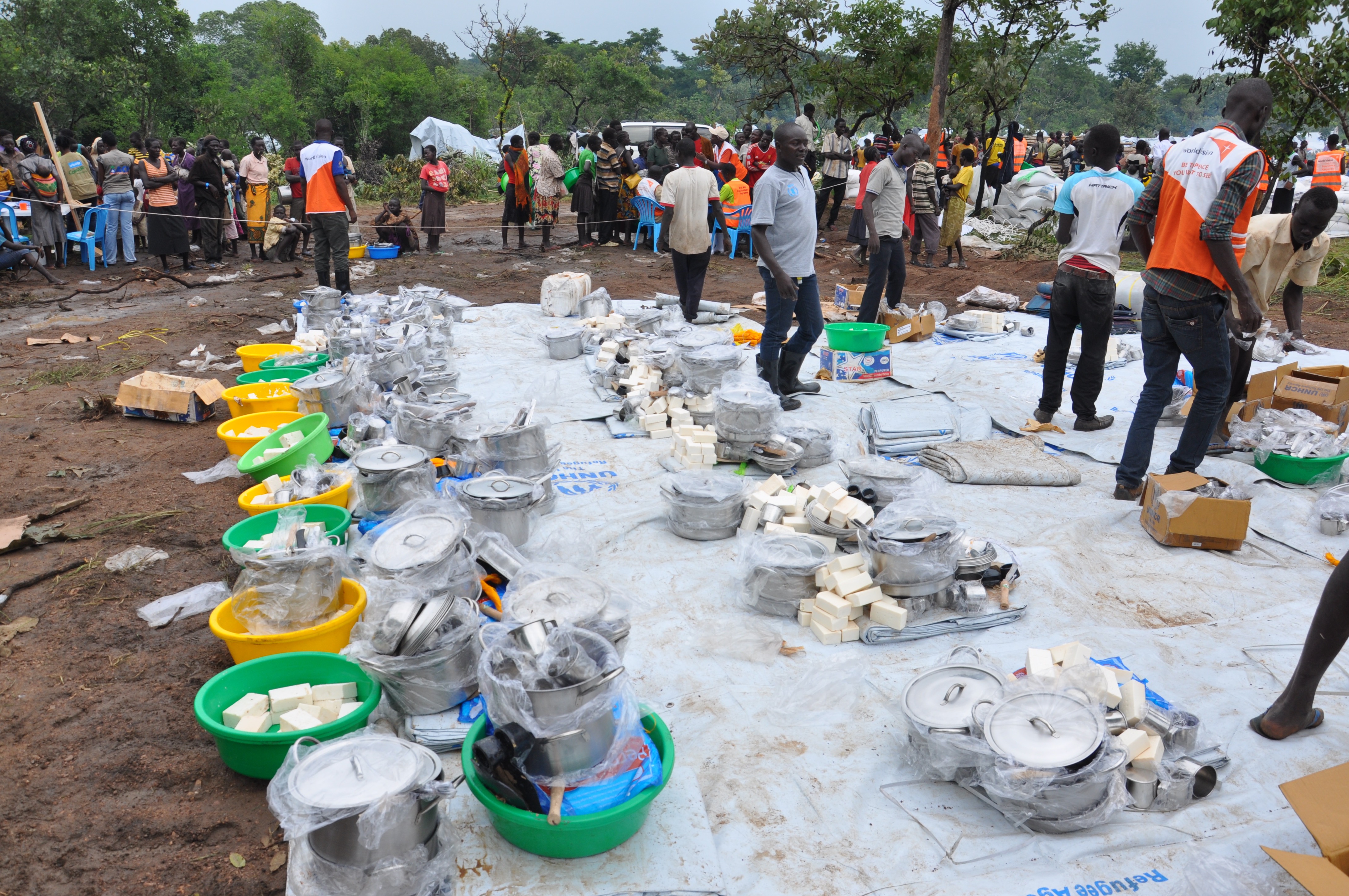In one flash, South Sudanese lose the good old life

In one flash, South Sudanese lose the good old life
RACHEAL NINSIIMA
“One Saturday afternoon, I saw armed men surrounding our neighbors’ hut. I knew we were in danger. I quickly grabbed my brothers and sister’s hand and started running,” recounts a remorseful Robert Komaketch, one of the unaccompanied refugee minors in Bidibidi camp in Yumbe district.
Together with another neighbor, Regina Abua, off they went, wading through irritating grass and stones. Their much anticipated destination was Waligo, a border town in Kitgum district, about 36Kms from Komaketch’s residence in Owiny Kibul. Komaketch tells this reporter that the journey was full of ugly images of old men and women too exhausted to make it to the border and just opted to be left alone by the roadside.
His tired eyes, grubby feet and dusty clothes tell of a life left in ruins by the current insurgence in South Sudan. The 15 year old was forced to drop out of school at Owiny Kibul Secondary School, where he was in senior two. This was after the death of his older brother who was responsible for taking care of them.
“My brother was shot outside the gate of the University of Juba as he returned home one night. We were just presented with a dead body in the morning,” he recalls.
Four months since his brother’s death, Komaketch, with a neighbor’s help, has sought to find a befitting life for his siblings. Before fleeing to Uganda two weeks ago, he worked in people’s maize gardens to raise some income. Currently, he spends his day rummaging through the vast camp and queuing for food.
CROSSING BORDERS INTO THE UNKNOWN
The violence that broke out in South Sudan on July 8 2016 has captured the world’s attention as nearly 90,000 refugees have subsequently fled to Uganda. The vast majority, more than 85 per cent are women and children, making this as much a crisis of South Sudan’s future as of its present.
Every day, about 10 gigantic busses wait by the docking site at Laropi, a ferry route connecting Moyo and Adjumani districts. These carry about 200 refugees each from Nyumanzi transit center in Adjumani to Bidibidi refugee camp in Yumbe district daily. There are some 20,000 South Sudan refugees living in Bidibidi currently.
Scores of destitute sun-scorched and tired looking, men and women, struggle to board in view of a peaceful and better life. The sight of suckling and crying infants is heart-wrenching. Driven for more than 100KMS, they finally arrive in Bidibidi, drenched in sweat and dust.
Mopping your eyes across the camp, hundreds of makeshift tents and burnt vegetation are sure to catch your sight. Vegetation is destroyed in order to create space to accommodate new arrivals. It is these camps that the new arrivals will call home, uncertain of whether they will ever make it back to South Sudan.
LIFE AS A REFUGEE
Komaketch and his siblings are now living in Bidibidi 1, one of the newly created 21 refugee settlements. He introduces his surviving siblings- David Abongo, 12; Nancy Ayet, 8 and Moses Allah, 6. Little Allah’s lips are chapped from dehydration but he manages to maintain a shy smile. Ayet is afflicted with chicken pox and has been isolated to prevent its spread to the healthier children. Abongo’s yellowing eyes tell of poor nutrition.
Komaketch’s dream of becoming a medical doctor is almost shattered, now that he is unsure of whether he will ever study.
“I wish a school could be introduced here. I don’t want to lose my education completely because of being a refugee. Seeing that the prospect for peace in my country is slim, I want to remain and develop here,” the teenager says.
For survival, Komaketch relies on a ration card from the UN Refugee Agency (UNHCR) which entitles him and his siblings to food and medical care. However, he says the long queues for food discourages some people from receiving food.
According to Bernard Amutuhaire, a monitoring and evaluation assistant with World Vision Uganda in Yumbe, Arua and Koboko districts, the large number of new arrivals (about 2000 daily) has made the refugee response to reprioritize food distribution to those in greatest need. These include: the elderly, orphans and chronically ill.
“Owing to food shortage in the camp, families are being given food to last one and a half months. Each family is given 12kgs of sorghum, 11.7kgs of maize 2.4kgs of beans, 0.9kgs of vegetable oil and 1.5kgs of soya bean for porridge,” Amutuhaire explains.
Water too has had to be rationed. Each family is now entitled to only 15 liters a day from 25 liters a week ago.
Philiam Adriko, a social protection facilitator with World Vision Uganda in Yumbe also decries lack of child friendly spaces in the camp where children may play and unchecked theft. He says theft is immense especially during the relocation of refugees from the reception center to the camp. Items such as clothes, basins and goats are usually stolen.
“Unaccompanied children are particularly at risk of using drugs, smoking and drinking at night when they mix with adults in the trading center,” Adriko laments.
MOMENTOUS INTERVENTIONS
To make refugees life worthwhile, different groups are working to provide different goods and services. On its part, World Vision Uganda is in charge of preparing and distributing hot meals to the new arrivals, distributing dry food rations like maize flour, beans and cooking plus non-food items like blackets, saucepans, among other house hold items.
“Every morning at 4am, World Vision staffs go to the border to give new arrivals high energy biscuits to keep them going for until they get food,” says Adriko. As the world looks for a lasting solution to the woes of this young state, massive displacements of its citizens is a reminder that challenges still abound.




